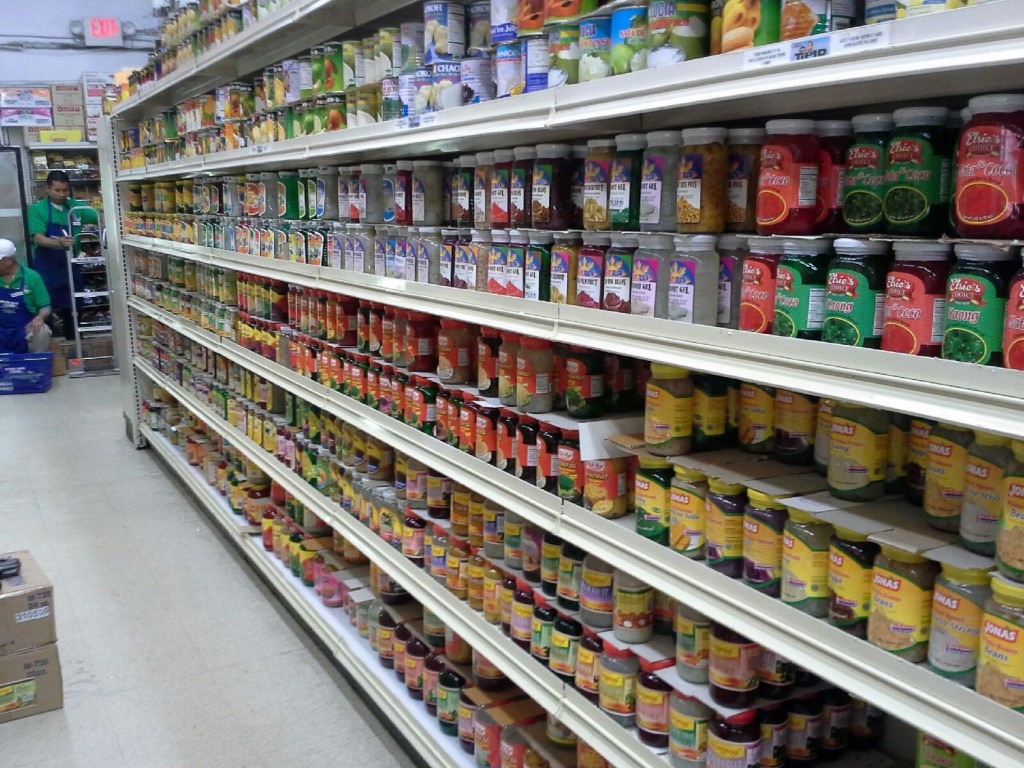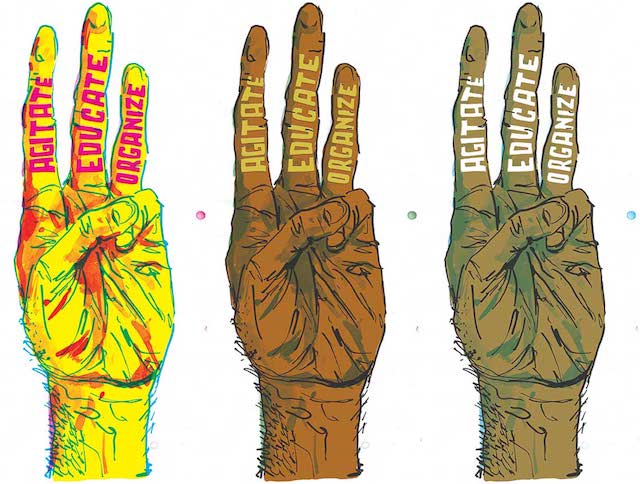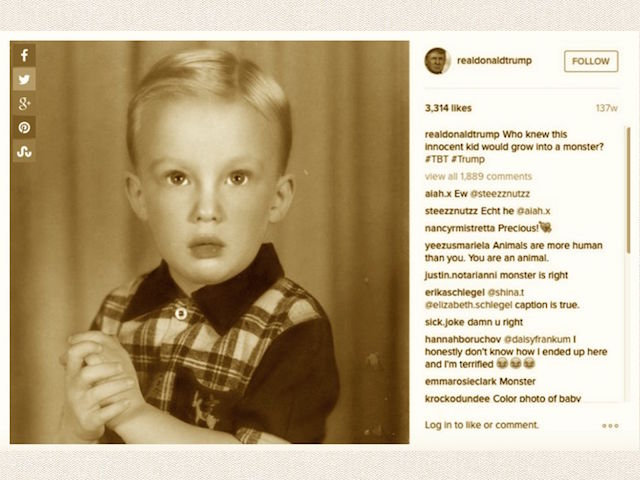Facing my father’s Indian American fantasies

August 26, 2019
Wedding planning is a constant weighing of choices. South Asian weddings in America are a constant wait for choice—to find out what choices, if any, we have.
My wedding venue was one of my own choosing. Well, of my own choosing and one that checked off all the boxes I learned to consider when venue hunting:
– Will this place allow outside food? (meaning non-white people food, Indian food—or, as we Indian people called it, food)
– What about the fire codes? Can a havaan be lit there? Do we need to get a fire marshall involved?
– Does its grounds accommodate a baraath horse? If a horse is too much, how about an elephant?
– And perhaps most importantly, how close is it to my hometown of Edison, New Jersey? This is not for any sentimental reasons. This was in case, as my mother put it, “we forgot a sari.”
I chose a local hotel where the white lady who worked in events impressed me with her pronunciation of Indian wedding customs. She guided my mother and me through the hotel parking lot, “our baraath parade route” up into the lobby, where “we normally have our milinis,” describing it all with neither a pretentious white-woman-at-a-yoga-studio flourish nor a callous I-can’t-be-bothered butchering. A few months later, in October of 2011, our two-day Afro-Indian wedding followed the path the white lady laid out. It was an action-packed event: there was a horse to mount, a fire to circle, a broom to jump over—and my husband Quincy and I did it all.
But even though the wedding album so clearly shows us baraath-parading all over the hotel courtyard, the men of the bridal and grooms party exchanging garlands in the lobby; even though Quincy and I walked around a fire in a marigold-decked conference room and later, during the reception, jumped a broom on the dance floor before commencing the traditional electric slide; even though my mother still complains about how a suitcase filled with turbans could go missing in the hotel halls (“who would want so many turbans?”); even so, despite all the in-person, photographic and videographic proof otherwise, my father still says: “Remember your wedding at Trump?”
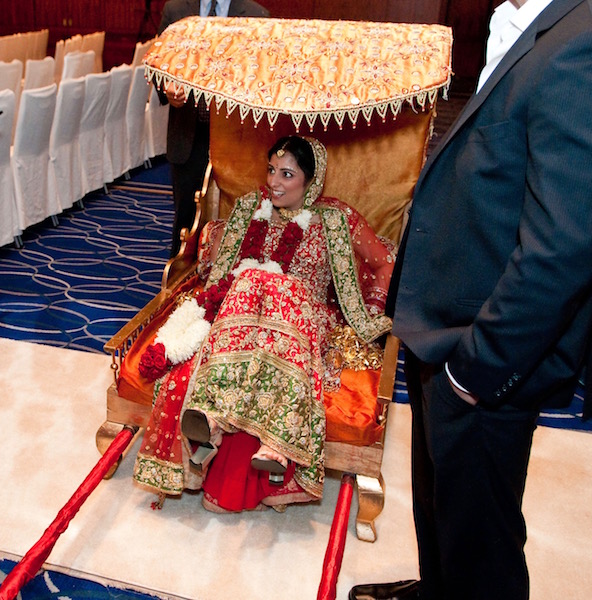
Technically, my father had arranged a post-wedding event honoring us at Trump National Golf Club Bedminster. But the gathering was unconnected to the wedding itself. It took place weeks after and was not listed in the invitation. My mother was not involved, as both of us were maxxed out on the planning of the actual wedding. My father was, essentially, the non-wedding planner of this non-wedding. He asked me to pick out the foods I wanted, with options like salmon and chicken—none of the “outside food” that would otherwise prove a deal-breaker. There was no fire code consideration, no horse route, no need to be within a 10-minute driving distance of the “forgotten sari.” None of the checks and balances of venue hunting were factored in. Even the guest list was different: no uncles or aunties, just my father’s golf buddies.
An 8 x 11 sheet of paper with roses printed at the borders listed the menu options. But I knew neither Quincy nor I would be there to choke down dry salmon or to cut around chicken bone, or to make polite conversation with whoever responded to the RSVP at the flowers’ edge. It wasn’t so much if we’d get out of it but how.
“You can blame it on me,” Quincy said.
“No, I don’t want to make you the fall guy,” I said.
“It’s a husband’s job to protect his wife at all cost. It was in my vows.”
“You really believe that?”
“I don’t know. My vows were in Hindi.”
The day of the party, the arrival of a big storm provided a great excuse for our no-show. While the weather was merely seasonal, I called my father to say we couldn’t make it, as if the wind and rain held us back and even the floral menu page was waterlogged in my regretful hand. My father put me on speakerphone in front of his guests. Later he told me, “Trump dipped his head in to the party.” I couldn’t tell if my father was humble or bragging.
I hung up the phone. I sent the obligatory thank you notes. And that was that.
Four years later, in June 2015, when Trump came gliding down a golden escalator in Trump Tower to announce his presidential bid, all I could think was, phew that was close. How could I ever have lived with that man’s name emblazoned on my wedding invitations, letterpressed no less? How would I have ever looked back at wedding photos, romantic shots of me and Quincy staged on that man’s course greens? That man who with his Birther conspiracies kept barking for Obama to show his birth certificate. That man who, once off the escalator, launched not only a presidential campaign but a vicious attack on Mexican migrants. That man who, when the PGA and ESPN moved major tournaments away from his clubs, still claimed that the golf industry supported his views on Mexico: “they know I’m right.”
I was relieved I didn’t have my wedding at that man’s club. That is, until my father said, casually, wistfully and between bites at a family dinner in July 2016, “Remember your wedding at Trump?”
It’s one thing for my father to say, “I had an additional party celebrating my daughter’s wedding at the Trump National Golf Club a month after the wedding.” But to say “your wedding at Trump” is, I dare say, an >gulp< alternative fact.
Why did my father say it? What made him insist—straight-faced, without hesitation, between bites of salmon—that we got married at Trump National Golf Club?
* * *
Perhaps just as much as country clubs, Indian weddings in America also are a fantasy of place and privilege.
How many Indians have encountered white people who’ve described an Indian wedding like a visit to Disneyland? Its opulence, its decadence, its ancient rites and rituals so stunning to behold and worthy of a monorail ride. Indian weddings are the safest and most non-threatening way to talk about Indians in America, through this sort of noble savage rhetoric. And it is perhaps the most fraught and potentially toxic way for Indian Hindus to affirm their identity—Indian diasporic weddings become a way to conflate religion and cultural identity into a pageant, an exhibit that upholds one of the most time-honored and oppressive of Indian practices: caste.
What is caste? It’s race but it’s not. It’s class but it’s not. Caste is story.
Here is a story, a love story, one that guided my life, one that I thought informed my own union in so many ways, one that I took pride in telling. My parents met in medical school. According to my father, he was singing in a band. My mother went to watch them and became a love-struck fangirl. “I got a love letter but it wasn’t signed,” he told me. “I had to go around campus looking for the woman who wrote this letter.”
They had a “love marriage,” I’d say to friends, to anyone who asked. I’d mention it casually, a humble-brag. What I always left out was the conclusion of the story, the part my father seemed to relish the most:
“And when I met your mother’s side of the family,” my father would say, “your mother’s family disapproved of me, even though I am a higher caste than her, just because I’m from the countryside. But I’m a Brahmin, the top, the holy, the most learned. Your mother, a merchant caste—she’s the lower one!”
“But I’m a Brahmin.” A strange twist to my parent’s love story, one I never wanted to hear and one I never repeated. Love conquers all, I hoped to express when I shared my parents’ story. Love conquers all except caste, I knew and never said.
Instead, I grew accustomed to saying my husband and I had a love marriage, much like my parents did. And that our giant Indian-Afro wedding would be part of a tradition of defiance, wherever it was held. I think of black-and-white photographs of my parents early into their courtship, ones that looked like scenes from a high school play. “We were acting out moments from our favorite Hindi films,” my mother once told me. Movies, I now imagine, might have emboldened them to pursue forbidden love. I think of the theatrics of my own wedding: the bigger and more traditional we went, the more I truly believed I was giving the middle finger to all those who said love between a Black man and a South Asian woman can’t be.
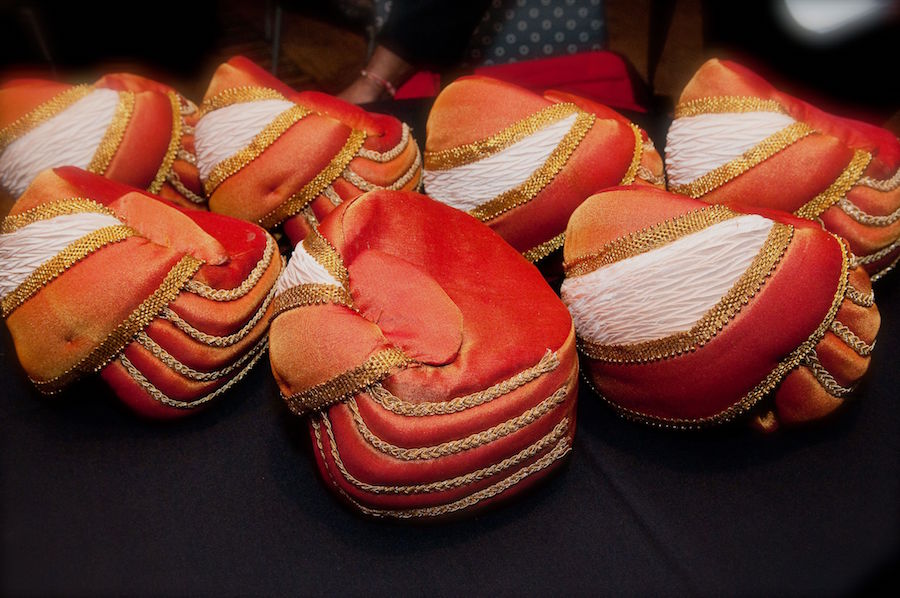
* * *
In April 2011, the month after Quincy and I got engaged, Barack Obama released his longform birth certificate. The certificate was to put an end to birtherism, a movement designed to tug at white America’s most racist, go-back-to-Africa heartstrings. But its splash on the screen felt bone-chilling. In so many ways it felt like the birthers had won. Obama’s hand had been forced. Trump himself boasted that it was a proud day. “So, just in finishing,” Trump said 10 minutes into a 30 minute speech, “I’m really honored and really proud that I could do something nobody else could do.” He went on to say “experts will check it.” His fight wasn’t quite over.
By this point, my father had been part of Trump National Golf Club Bedminster for five years. He first interviewed there in 2005 and was rejected. “Someone on the board thought he talked too much,” my eldest sister told me.
When my mother told me that my father had suggested Trump National Golf Club for the wedding, I could have said: “Hell no will I marry Quincy at the place owned by a man who questions the citizenship of Black men.”
I could have said: “Would Quincy be asked to produce a birth certificate? Citizenship papers? Would our marriage certificate even be honored?”
I could have said: “Central Park Five” and hung up.
But in reality, I didn’t say anything. I laughed.
“Haha, no,” I said, assuming the conversation was dead on arrival. I thought it was a joke.
* * *
When I was seven, we moved from one central New Jersey suburb to another, from Fords to Edison. It was 1987, and the town felt largely white to me: the India Day Parade wouldn’t make its mark on Edison for another 17 years and even Patel Cash and Carry hadn’t yet made its way from Chicago.
Every day, turning the corner to go to school, I would see the Plainfield Country Club, a whites-only institution near the border with the city of Plainfield. Hedges lined the periphery and kept most of the club out of view, but I could make out the street-side tennis courts and a rising hill leading toward a majestic colonial Big House. The club’s sign lay at its entrance. A simple white wooden placard, it was best read top to bottom. At the top, the letters “PCC” were nestled in a small blue-painted crest that rested on two crossed golf clubs, like a coat of arms. At the center and taking up the length of the sign, the full name of the club was etched in blue, in a distinguished, chunky Times New Roman. At the very bottom, beneath a margin made by a small gold line, lay in smaller blue letters, this time in all-caps: “MEMBERS ONLY.”
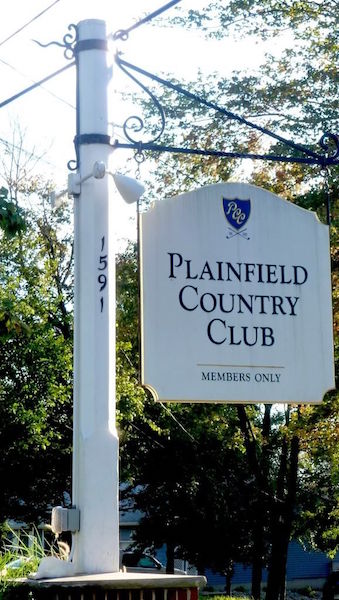
While I couldn’t see much else of the club, I imagined that our house didn’t look so different. It, too, was a colonial with rolling hills and was as old and storied as PCC, owned by a textile-rich family who in the 1940s designed for themselves English country-side-like estates. That an Indian family had come into one of the estates so many years later was always funny to me. The joke lost its humor, though, when I’d reach the end of the block. I don’t remember having to be told what “members only” meant—it felt like I had always known.
“PCC” the kids called it at school. Many of my private school classmates were members. PCC sounded to me so much like PC, 90s shorthand for personal computers and political correctness. Here is a sentence we’d never say: I saw a kid in the computer lab working on a PC while wearing PCC clothing, which is so not PC. We’d never say it, not because it’s a tongue twister, but because our country club and our private school seemed to share an admissions policy. It was not uncommon to see white children wearing a club shirt or a hat to school. Baseball hats, I came to understand, aren’t so many generations removed from white pointy Klan hats. The kid who I most often saw wearing PCC gear had a locker right next to mine, and in it was a giant bumper sticker for a metal band called WASP. He was a blonde white boy with a dizzying name along the lines of Van K. Van Dyke III or Whit V. Whitman V or Mils P. Millions the Millionth. He went by Trip.
I had one friend whose family went to the club, but I never went with them. They did once take me to Rhode Island, to a town called Watch Hill. I was shy there. I could have fun with my friend when we were on our own, but I would shut down when the rest of the family was around. I remember them joking together as a family: “You need to have blue eyes to be a resident in this town—it’s the way that you apply for residency.” Did they see that I was there?
* * *
Some of my earliest memories were mealtime conversations in our dining room. The way we talked as a family sounded like we belonged in the country club, just no one knew it. At the dinner table, I’d hear my father and sisters talk about the word “Arayan”—how it was first an Indian word before Nazi Germany, how swastikas were born out of religious swastiks.
As high schoolers, my older sisters would press my father to talk about his green- and blue-eyed relatives. He liked to tell us about his hometown, a northern Indian hill station “where the British loved to vacation.” All the while, he continued to tout his upper caste Brahmin lineage. Soon, my sisters would show up to the dining table with green and blue contact lenses in their eyes—to connect with their ancestry, of course.
I was a decade younger than my sisters and I didn’t quite understand everything. I didn’t say much. Listening, sometimes I’d get stuck on the tone, stuck in the rhythm of what was said.
“Members only, members members only.”
“Only?”
“Yes! Members only, only.”
“Only, only, only members.”
“Members, yes, members only members.”
* * *
Suburban New Jersey tends to sprawl with country clubs segregated along race and color lines. We navigated this terrain like pros, like it was part of our brahminic birthright. While I was in high school my parents joined a Jewish country club. The club’s name—the Shackamaxon Country Club—derived from the Lenni Lenape. “Shack,” we called it.
We spent almost every Thanksgiving of my high school years at Shack. We didn’t socialize inside, no one besides my father that is. I tried to keep my head down, staring at my food. I felt overwhelmed, not from the Thanksgiving feast but from self-scrutiny: there were no other brown faces. Well, technically there was one lone brown face we passed before we entered: on a small signpost just before the car valet, painted in a green as vivid as putting grass, was a spare profile of a man’s stoic face atop of which lay a row of feathers.
Though he did his best to normalize the experience of those Thanksgivings at Shack, my father held court as fellow doctors came up to our table and shook his hand, thanking him for a consult, referral, or a favor. My father expertly played the part of a rare and benevolent brown king, telling a joke or ribbing club members kindly, his thick gold Rolex glinting as he shook their hand and wished them along to their happy Thanksgiving.
I remember seeing kids from my high school there, but we never talked about these encounters, passing each other in the school hallways as wordlessly as we did in the Shack buffet line.
Once when we had no water in our house, my mother took me to shower at Shack. I remember her calling out to the groundskeeper with all the force of her lungs as she tried to find the ladies locker room, and how he just drove past us on a golf cart. I felt so hurt. I’d rather have stayed dirty.
* * *
Many years later, driving past PCC with my family and Quincy, we finally talked about the place openly, or as openly as one can for a few seconds at a stop light. Quincy, my middle sister, and I were together in the back seat. This sister and I spoke separately of our fantasies of wanting to vandalize PCC’s white placard as we passed it every day on the way to school. “You too?” I said aloud, surprised that she felt the same way. She told me how she wanted to write about PCC for the school newspaper but that our English teacher disapproved because of how many families at the school were members. I was impressed that she had tried to say something at the time. And I was angered that our teacher shut her down. He taught me as well and would make the very same joke he had made to my older sisters at attendance, likening our last name to the toilet paper brand. “Sharma as in Don’t Squeeze the Charmin.” Later, he would be caught trying to flirt with a minor.
Even past the corner, my sister and I continued plotting our spray-paint-and-buzzsaw revenge on PCC. “I’d make copies of their entrance sign,” Quincy later said. I couldn’t understand it—vandalism not by destruction but more markers of place. A PCC wooden placard posted at the entrance of the local mini-mall, another flanking the sign for the Parkway, another eclipsing the closest rest stop. Perfect well-constructed replicas—painted golf clubs crossed like swords, Plainfield Country Club plainly etched and MEMBERS ONLY in a finer print—popping up like advertisements of exclusivity, like the markers of Jim Crow from which they came.
* * *
“Trump” we began to say simply. In 2006, my father got in. From then on, my mother could say on a given day, “No, your dad went to play golf at Trump” or “Do you want to join him for a meal at Trump?” or “He doesn’t care to be home, he loves his life at Trump.” That’s the way we referred to the club, “at Trump,” last name and place conflated, a caste of its own.
My father talked about taking my five-year-old nephew to the clubhouse for lunch. “Trump stopped by our table. And he snagged Rohan’s chicken nugget. ‘Hey, he took my chicken nugget, Rohan said.’ And Trump just smiled.” My father smiled too.
My father talked about seeing Trump’s balls being knocked, kicked, ushered closer to the hole, only adoring him more for it. “And he says to me: I cheat in business, I cheat on my wife, why wouldn’t I cheat on the green?”
“Your mother doesn’t like him,” my father added.
“Evil man,” she chimed in.
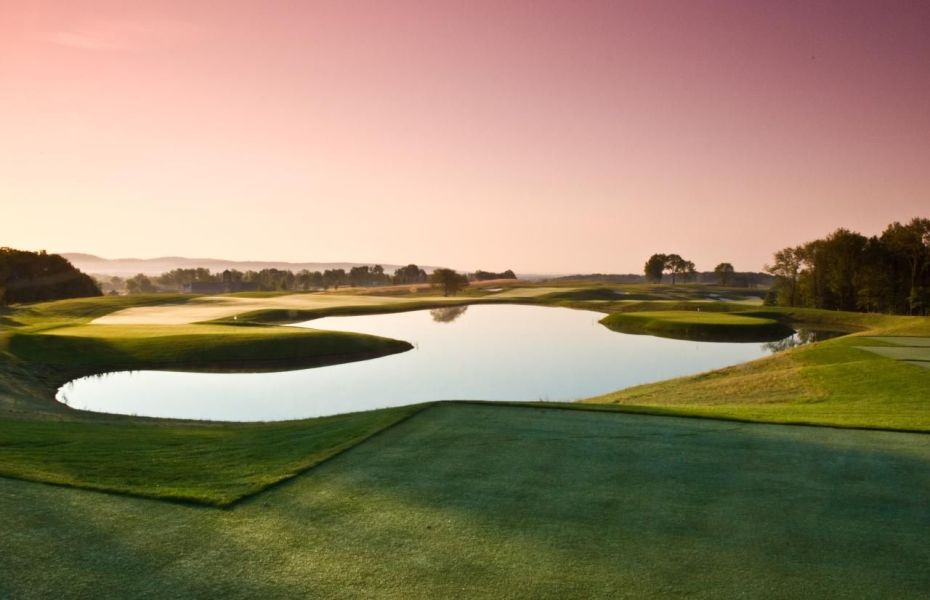
Only in the midst of Trump’s campaign, sometime in November 2015, did my father hesitate in his ardor. Trump asserted that the “the heavy Arab population” of Jersey City “were cheering” during 9/11 as “the buildings came down.” “He went too far then,” my father said.
I wonder if my father remembered the bumper stickers that my mother bought just days after the attacks, American Flags and soaring eagles slap-dash on their German cars. Maybe he recalled the Dotbusters terrorizing Jersey City in the 80s and early 90s and was angry at Trump’s erasure of this history. Or maybe his mind went further back, toward hardships from his first year in the U.S., when during his medical residency he broke down in front of his supervisor over a fellow resident’s continual taunts and aggressions. Or maybe he simply knew, no matter what caste he was himself, he could always be mistaken for a “cheering Arab.”
At the time, I thought this might have marked the end of my father’s affiliation with Trump. He would quit, just as he quit Shack. He’d find another golf club, maybe he’d drop the sport entirely, take up Ta Chi or join my mom’s meditation group or attend one of those Bob Ross seminars painting happy trees. But when Trump won the Republican Party nomination in July 2016, my father initiated his own robocall campaign.
“It will break my heart if you don’t vote for Trump, Nina.”
* * *
Just before the election, in October 2016, Trump came to Edison to attend an event of the Republican Hindu Coalition, an organization run by Shalabh Kumar, one of Trump’s largest South Asian donors. There, in the New Jersey Convention and Exposition Center, Trump said, “I’m a big fan of Hindu.” We might mistake this phrase as an ignorant slip of the tongue, but I would argue the phrase is blindly clear. “I’m a big fan of Hindu” signaled the boldface racism and religious discrimination to come from a Trump presidency: a racism that is putty in the hands of many Indians, those who set their horrors—traumas of home and migration—behind a “members only” religious piety, men like my father who is “a much better caste than your mom” or Shalabh who when asked why he forgoes more inclusive terms for Hindu American, simply said: “The word ‘Hindu’ has caught fire.”
* * *
Trump first used the term “shithole countries” in January 2018. He was speaking at a bipartisan meeting to debate a plan proposed by the Democrats to end the diversity visa lottery in favor of providing visas to more vulnerable groups, such as those from Haiti, El Salvador and some African countries, and to keep DACA going with “concession.”
He went on to say:
“Why do we need more Haitians? Take them out.”
The new year had just begun and the next day would be the eight-year anniversary of the earthquake in Haiti. “Why are we having all these people from shithole countries come here?”
2017 had been filled with legal fights over travel bans, threats to the existence of DACA and rescinding of Temporary Protective Status. In November 2017, he rescinded protections for nearly 60,000 Haitians. In January 2018, Monday of shithole week, he had rescinded similar protection for nearly 200,000 Salvadorians. In June 2017, Trump was reported to have said in an Oval office meeting that Haitians “all have AIDS” and Nigerians would “never go back to their huts.”
It was an Indian American man, White House Deputy Press Secretary Raj Shah, who came out fighting for Trump in the wake of “shithole countries.” “Certain Washington politicians choose to fight for foreign countries, but President Trump will always fight for the American people,” began Shah’s statement, the first public response from the White House.
Shah’s response was filled with words such as “merit-based,” “assimilate,” and “legal pathways.” They appeared in article after article, articles most often titled something like “White House Does Not Deny Shithole” and in which Shah was referred to simply and directly as “spokesperson”—the mouthpiece for Trump’s “shithole.”
Every immigrant wants to claim that they came here through a legal pathway. But the truth is, the more you look at those legal paths, the more you see their ever-changing, ever-conflicting racist contours: from the Naturalization Act of 1790 which limited naturalization to immigrants who were free White persons of “good moral character;” to the Chinese Exclusion Act of 1882, the first time Federal law proscribed entry of an ethnic working group, to the Immigration Act of 1917 through which the “Asiatic Barred Zone” was created and literacy tests were implemented; to the National Origins Formulas, quotas used and adjusted from 1921-1965 in service of keeping America WASP always, restrictions tightening under the Immigration Act of 1924 when the post-World War I recession led to yet another rise of “they will steal our jobs” xenophobia; to the Immigration and Nationality Act of 1965 where, while the national origins quotas were abolished and the country let in Asians in unprecedented numbers, the bill, passed in the height of the Cold War space race, largely brought in those trained in specialized skills—like my physician parents.
These continual reroutings of so-called legal paths shifted with white America’s racist wit and whimsy, and is how we knew what “talk too much” during a country club interview really meant.
* * *
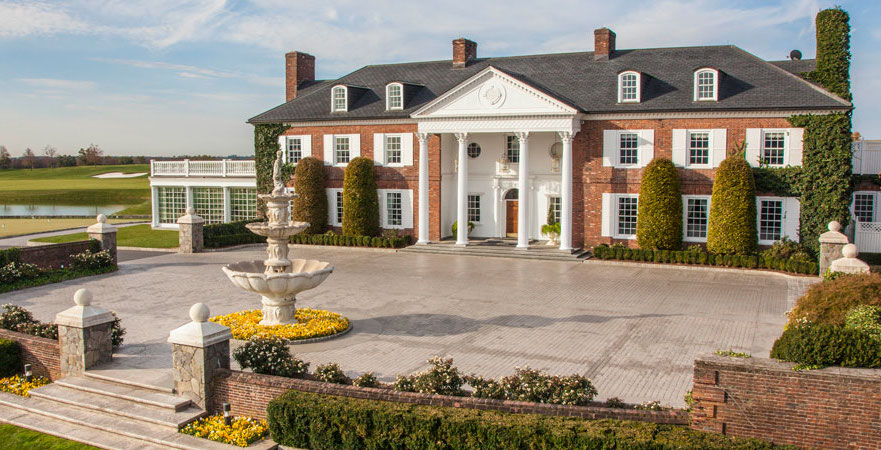
I first stepped into the Trump National Golf Club a year after my wedding. I had slept over at my family’s house and as I was waking up, everyone was getting ready to go to “Trump.”
“I don’t have a bathing suit.”
“You can borrow one of mine,” my middle sister said, passing me a one-piece with maternity control top, a clump of excess nylon resting heavy on my already-knotted stomach.
The ride from Edison to Bedminster was long, or long enough for the children to fight as a Chipmunks movie entered its second act on the Mercedes back seat TV. When we were finally off the highway, we entered into an unlikely part of New Jersey, vast farmland with hay bales, horses, and even cows.
We slowed at a gatehouse, a tiny stone-and-columns cottage that seemed more Hobbit home than entrance checkpoint. Waved in, we made our way up a tree-lined drive, rolling golf course hills on either side. A larger version of the Hobbit-gatehouse came into view. This was the club house: a two-story brick building, with many wood-shuttered windows painted white and a doorway fashioned like a Greek portico, columns and all. In many ways it was much more a classic wedding location than any hotel. How manorly it looked took me by surprise. There was no sign of gold-plated Manhattan high-rise Trump.
In the pool area, recliners lay out in rows across a large sundappled deck. On the left were tables and a poolside bistro. Tucked in the right corner, further away from the main pool and closer to the kiddie pool, was a cozy white cottage, out of where I would later see Melania emerge. Holding a tube of sunscreen, she marched toward a kid splashing in the pool with my nieces and nephews. “That’s my friend Barron,” my niece would say later.
The pool space was enclosed by a building, another majestic brick, the center of which was an arched entryway, a portico without columns. Instead, the arch held a split staircase. A verdant golf course appeared just beyond. This building made an idyllic stage picture, the perfect symmetry of neoclassic design.
“That arch is pretty,” I admired.
“See?” my middle sister said, “You could have done the wedding here.”
I didn’t realize I had said it out loud.
* * *
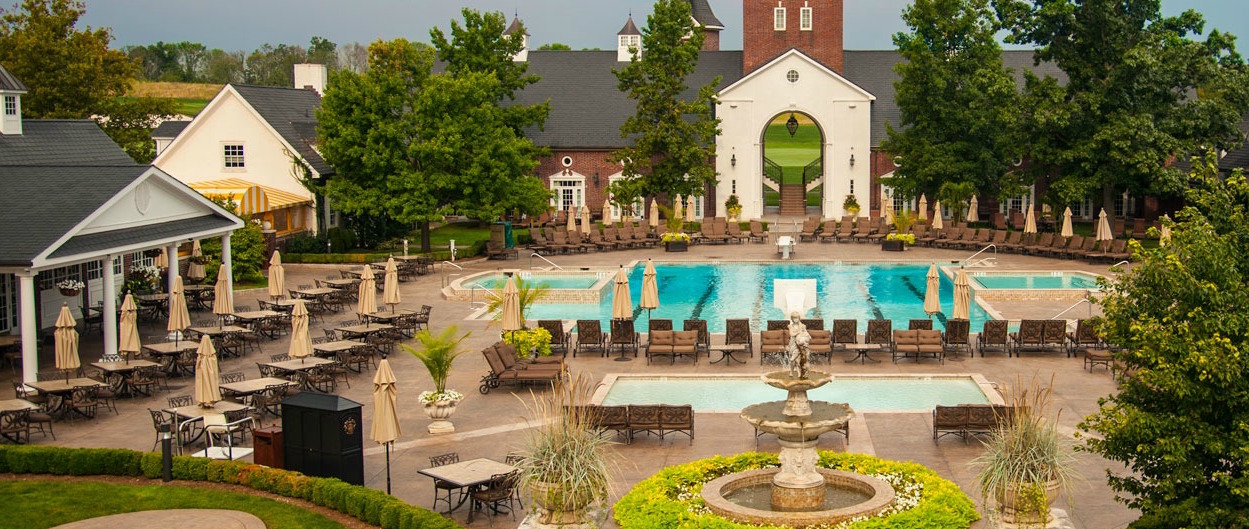
Trump went to his golf club during the funeral of the Parkland victims. He went to his golf club after declaring a “national emergency” at the border (though he gave no evidence of said emergency). And after telling four congresswomen, four women of color, all American citizens, to “go back to where they came from” he went back for another round of golf. He has gone to his golf club far more than he condemned Obama for, so much so that there is a website called Trump Golf Count, on how much it costs taxpayers—so far 109 million dollars and counting.
We might say he goes there so often because the club is a small-scale version of an America he sees as great. But in reality, the club is more like the America we know.
In a December 6, 2018 profile in New York Times, Victorina Morales and Sandra Diaz, two of 38 fired undocumented workers represented by lawyer Anibal Romero, broke their silence on the use and abuse of undocumented workers at Trump National Golf Club Bedminster. In February 2018, investigators at the New York Attorney General met with 30 former employees of Trump’s New York golf courses. A few of the interviewed workers have publicly come forward revealing that golf club managers were not paying undocumented workers for overtime, sometimes after working over 60 hour-weeks, or were denying promotions or health care benefits. Hundreds of contractors have come forward with unpaid bills on work done at his clubs, resorts, and casinos. In a June 9, 2016 USA Today report, Marty Rosenberg, vice president of Atlantic Plate Glass Co, said he was owed $1.5 million for work at Trump Taj Mahal. He went on to informally represent 100-150 unpaid contractors, some of whom Trump offered as little as 30 cents on the dollar. “Yes, there were a lot of other companies,” Rosenberg said in the report. “Yes, some did not survive.” And in those very same structures built by devastated contractors, we see our familiar, un-great America in how staff are most often from those countries Trump targets in his hatespeak. At Mar-a-Lago, a majority are from Romania and a country Trump deemed shithole—Haiti.
In this way, country clubs are not a MAGA utopia filled with Norwegians. They represent the United States at its shittiest, a place where economic disenfranchisement and racial hatred are sanctioned, bound together, practiced on rolling hills and open air.
* * *
In 2016, just after the election, I talked with my father over the phone:
I don’t think you will like hearing this but…
Trump held an event at his golf club…
The event was for people who had been members for ten years…
That’s me I am a member for ten years…
It was a dinner where he gave a speech…
That he is misrepresented…
That he will take care of minorities and that they like him…
He pointed at me—you are the one who told me to run for president so many years ago…
Brought me and Mom up for a picture…
I didn’t want to go up…
But…
That African Americans shouldn’t even be called that…
Just Americans…
“No,” I said. “Dad, do you read the news?”
Yea, the way they treated Mike Pence…
“No Dad, do you read the news?”
I don’t like Trump but I also don’t like parts of Obama or Hillary either…
I really don’t like this one thing Hilary did…
“Dad, I don’t agree with you. I would like to stop talking about this for now, I don’t want my precious time talking to my mom and dad to be about this.”
He pointed at me—you are the one who told me to run for president so many years ago
Brought me and Mom up for a picture
I didn’t want to go up
But

